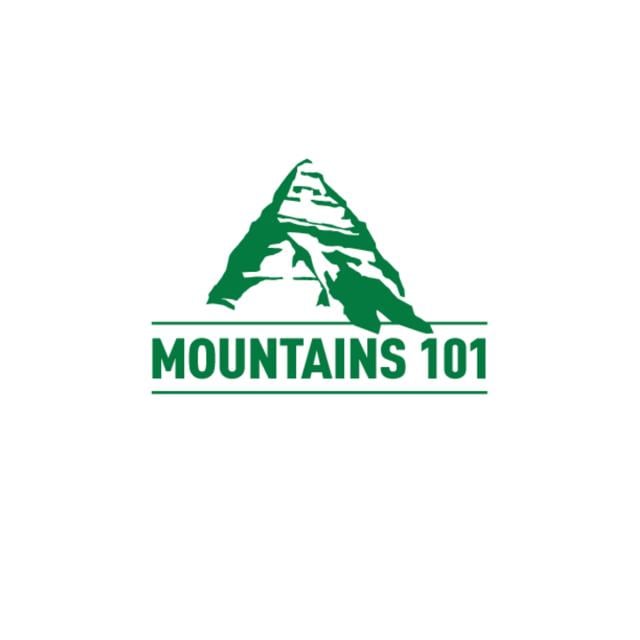MOOC List is learner-supported. When you buy through links on our site, we may earn an affiliate commission.

MOOC List is learner-supported. When you buy through links on our site, we may earn an affiliate commission.
Specifically, we'll study the geological origins of mountains, how they’re built-up and worn-down over time; we’ll learn about their importance for biodiversity and water cycles, globally and locally; we’ll explore their cultural significance to societies around the globe, and how that relationship has evolved over time; and we’ll learn how mountains are used, how they’re protected, and how today they’re experiencing rapid change in a warming climate.
At the end of each lesson, Mountains 101 will also provide learners with some smart tricks -- Tech Tips -- to safely enjoy time in the high alpine environment: from how to pick the best footwear for hiking to making smart decisions in avalanche terrain.
We’ll be delivering your online lessons from valley bottoms to mountaintops, from museums and labs, to alpine huts and other spectacular alpine sites, and we’ll do so with the help of a whole host of experts.
We invite you to join us for this online adventure! The mountains are calling...
Syllabus
WEEK 1
Why Mountains Matter
In this introductory lesson, you will learn why mountain environments are relevant to people all around the globe. We’ll also define just what a “mountain” is in order to show why it is useful to think about mountains from various perspectives. TechTip: Your feet are your vehicle
WEEK 2
Origins
In Lesson 2, we discuss why mountains are located where they are. How did they get there? We’ll explore the physical origins of mountains, theories of mountain building, and how our changing ideas about mountains and their genesis have shaped our engagement with them. TechTip: Dress for success
WEEK 3
Climate
Mountains influence climate and weather at both global and local scales. In Lesson 3, we will examine how elevation affects atmospheric processes, and discuss an ecological manifestation of mountain climate: the alpine tree line. TechTip: What goes in your pack?
WEEK 4
Bodies at Altitude
Lesson 4 explores some of the physiological responses that allow humans to visit higher altitudes, as well as the unique genetic adaptations that permit long-time exposure to the world’s high places. TechTip: Stay found – preparation
WEEK 5
Water Towers
Lesson 5 focuses on mountain hydrology. We'll discuss the ways that water moves through the mountain landscape, how water shapes and changes mountain landscapes, and we'll introduce some hazards associated with water, such as glacial lake outburst floods. TechTip: Stay found – in the field
WEEK 6
Glaciers
Lesson 6 focuses exclusively on glaciers, their physical composition and processes, how they form and move, and how they modify the landscape. We’ll also examine how our changing understandings of glaciers have shaped the ways people have engaged with mountain landscapes over the past few centuries. TechTip: Stay safe – from falling
WEEK 7
Imagination
In Lesson 7, we examine some of the ways people have imagined mountains throughout time, and try to place those ideas and attitudes in their respective cultural contexts. Appreciating the diversity of views – their reception in oral traditions, art, literature, architecture, and other cultural forms – gives us some context for the more dominant ways we think about and celebrate mountains today. TechTip: Stay safe – winter challenges
WEEK 8
Hazards
Mountain hazards are the focus of Lesson 8, specifically snow avalanches, landslides, and volcanoes. We will examine the physical processes that lead to instability in mountain landscapes and consider how risks associated with hazards can be managed. TechTip: Stay safe – avalanche safety (know before you go)
WEEK 9
Mountain Biodiversity and Adaptations of Plants
In this Lesson 9, we discuss the ecological and evolutionary processes that account for the remarkable biodiversity of species living in mountain environments. Then, we explore some of the unique adaptations that plants have for coping with extreme conditions, including cold, intense solar radiation, and short growing seasons. TechTip: Go farther – camping
WEEK 10
Animal Adaptations
Animals living in mountains have evolved morphological, behavioural, and physiological adaptations to survive under extreme conditions. In Lesson 10, we will focus on how several species deal with the cold and conclude with a peek at the adaptations of fish living in mountain lakes. TechTip: Go farther – cooking
WEEK 11
Use and Preservation
How are mountains used? How are they preserved? In Lesson 11, we examine the often conflicting demands of using mountains, and preserving and managing the integrity of mountain environments, cultures and economies. TechTip: Go softly – mountain ethics
WEEK 12
Future Mountains
In Lesson 12, we will look forward and consider some possible future scenarios for mountains. How is our changing climate affecting these places? What are the indicators of change? What lessons can we learn from the past and present to inform decisions for tomorrow?
MOOC List is learner-supported. When you buy through links on our site, we may earn an affiliate commission.
MOOC List is learner-supported. When you buy through links on our site, we may earn an affiliate commission.
